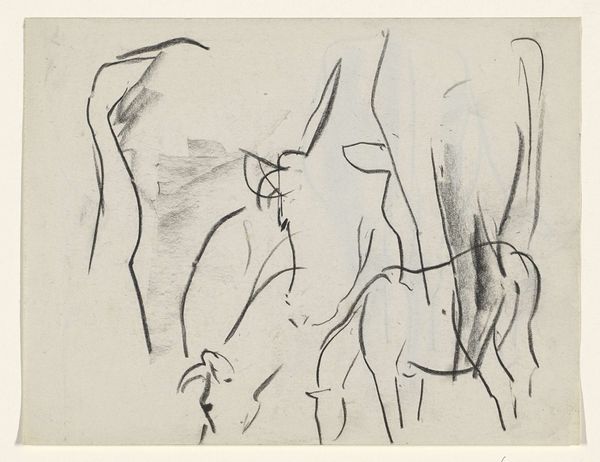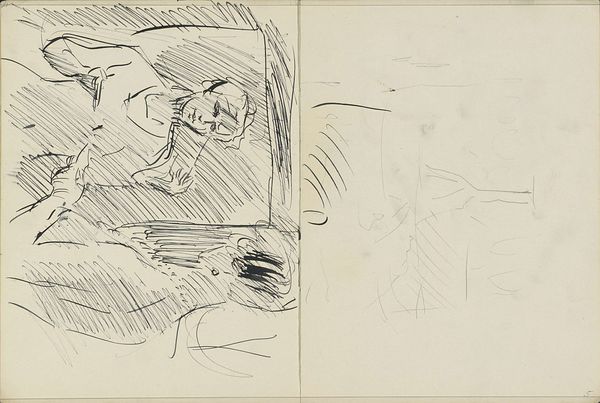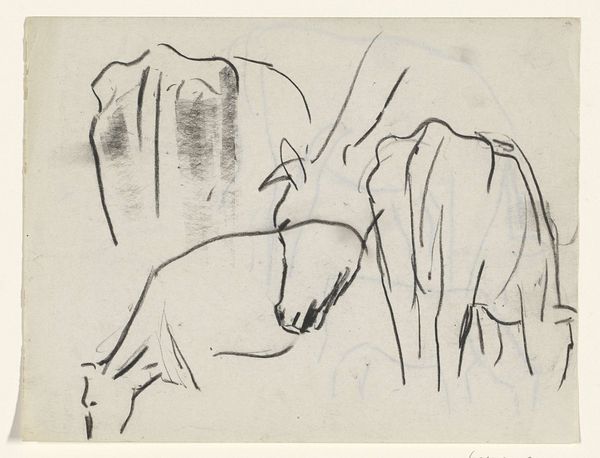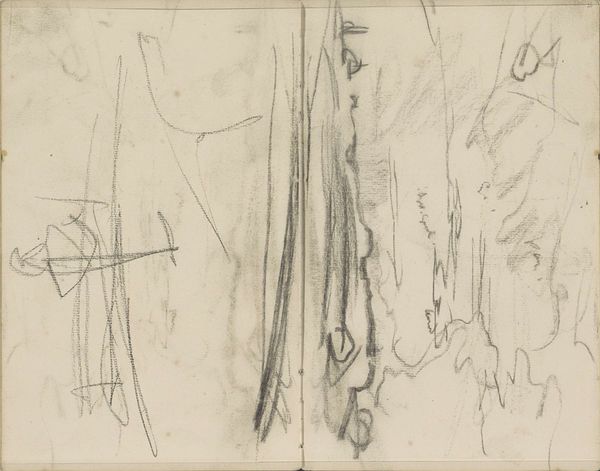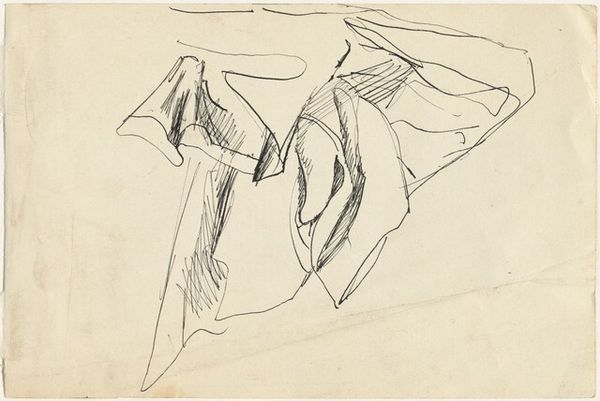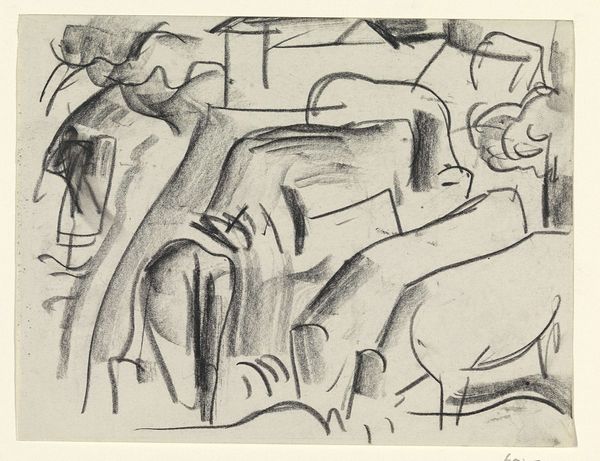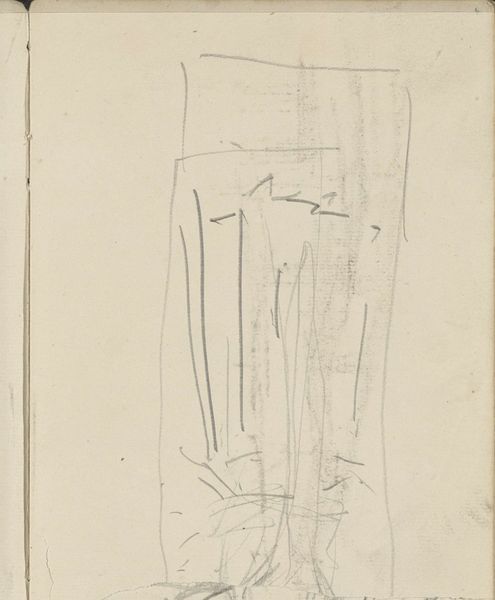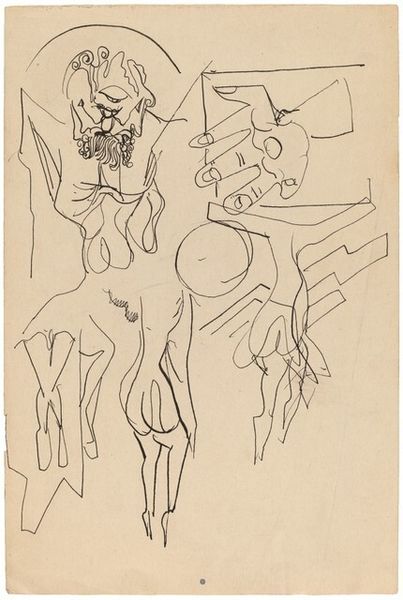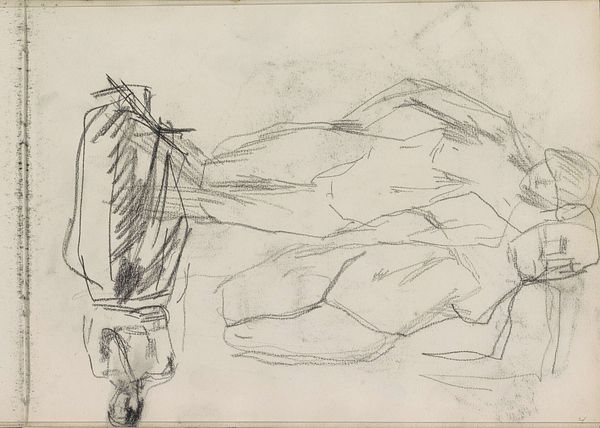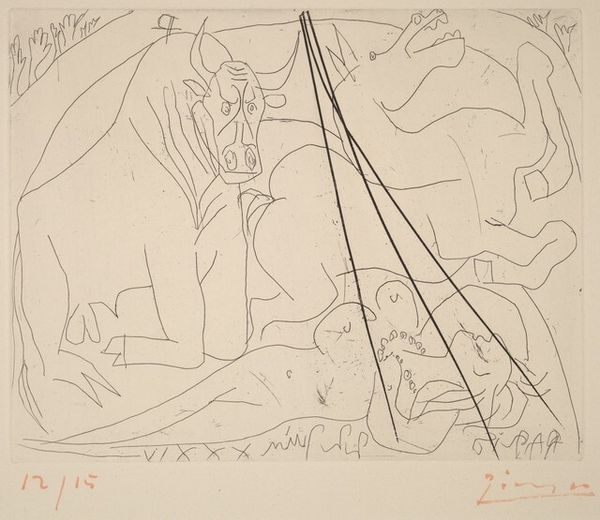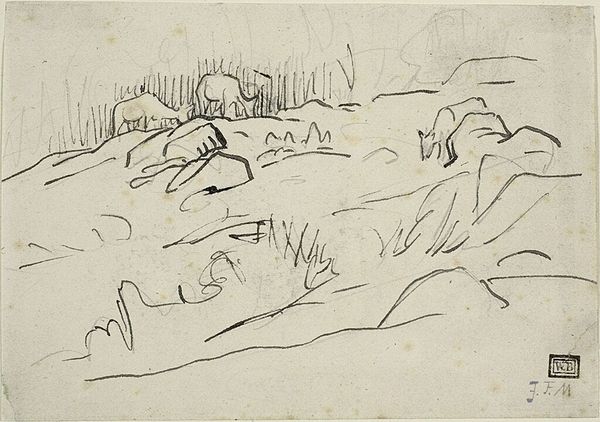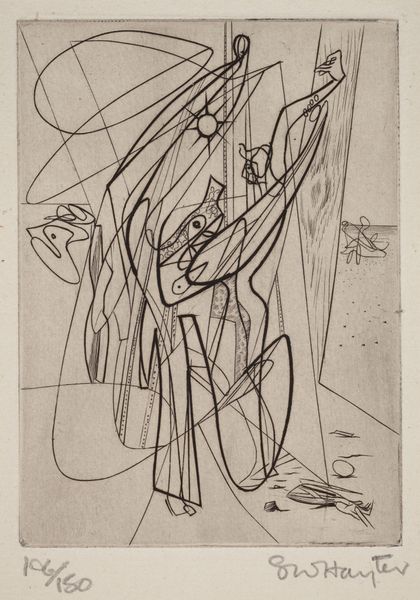![Untitled [verso] by Mark Rothko](/_next/image?url=https%3A%2F%2Fd2w8kbdekdi1gv.cloudfront.net%2FeyJidWNrZXQiOiAiYXJ0ZXJhLWltYWdlcy1idWNrZXQiLCAia2V5IjogImFydHdvcmtzL2U5NmRhZjM5LWRmZGMtNDE5Yy04ZGI1LWYyZGNlZDMzMTRjOS9lOTZkYWYzOS1kZmRjLTQxOWMtOGRiNS1mMmRjZWQzMzE0YzlfZnVsbC5qcGciLCAiZWRpdHMiOiB7InJlc2l6ZSI6IHsid2lkdGgiOiAxOTIwLCAiaGVpZ2h0IjogMTkyMCwgImZpdCI6ICJpbnNpZGUifX19&w=1920&q=75)
drawing, ink
#
abstract-expressionism
#
drawing
#
pen sketch
#
figuration
#
ink
#
ink drawing experimentation
Copyright: National Gallery of Art: CC0 1.0
Curator: At first glance, Mark Rothko's ink drawing, titled "Untitled [verso]", feels unsettling, almost fragmented. The stark black lines on the bare paper evoke a sense of incompleteness and tension. Editor: Indeed. There's an intriguing rawness to it. Rothko's embrace of Abstract Expressionism typically focuses on color fields to communicate profound emotions, but here, the simplified lines point to the early figuration of the artist. He creates an unstable interplay between abstraction and recognizable shapes. How does this "verso," or reverse side, challenge the grand narrative of his established art? Curator: Precisely, and that's where its power resides. I believe the deliberate obscuring and simplification speaks to a broader struggle with identity, reflecting anxieties of postwar American society – anxieties deeply entrenched within psychological displacement that often surfaces as deconstructed archetypes in visual language. These symbols may be familiar— limbs, a torso— but they seem trapped, incomplete, as if they’re emerging or receding from the canvas, like phantoms caught in a moment of self-reflection. Editor: Considering the period's prevailing unease, viewing "Untitled [verso]" through that historical lens, what could these dismembered limbs signify beyond personal turmoil? Rothko's contemporaries like Pollock and de Kooning reflected on cultural trauma and mass societal anxieties. Does "verso" also comment on socio-political fragmentation through the abstracted body? Curator: I agree completely; the universality of body language is something which transcends language barriers. The simplification of each line, however bold, feels fragile. Its bareness also alludes to that historical context through an invocation of universal motifs or an unraveling symbolic order: where society at large mirrors this feeling. The 'verso' could then be seen as an 'other-side' or shadow element: The subconscious is the shadow to civilization as society becomes more 'modern', in a state of flux and trauma after great wars or cataclysmic change. Editor: In short, it functions as an artistic prelude, allowing access into the social contexts affecting Rothko while granting a privileged glimpse into the evolution of one of the 20th century's masters. Rothko allows us a view behind the veil. Curator: Right, it leaves you pondering not just Rothko's artistic process but the emotional and cultural bedrock that shaped it. Thank you, this art gives so much to reflect on and take to heart!
Comments
No comments
Be the first to comment and join the conversation on the ultimate creative platform.
